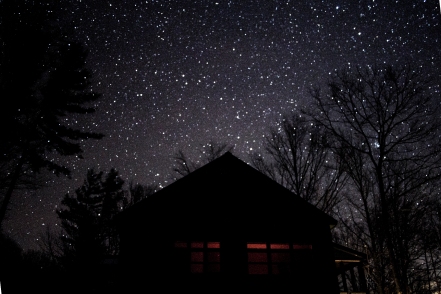Jim Nabors’ death was announced today. It immediately made me think of my sister Cath and the phrase “Hooy-Hoo!”.
 Why? Because, during the days when Gomer Pyle, U.S.M.C. was a popular TV show, Cath persisted in trying to imitate Nabor’s famous depiction of the inept but good-natured country bumpkin with the astonishing singing voice who never failed to irritate the crap out of the long-suffering, by-the-book, buzz-cut Marine Sergeant Carter. Cath thrilled at the idiocy of the Gomer Pyle character, and her favorite episode illustrating Pyle’s intrinsic silliness came when Pyle was sent on some kind of bogus mission where he donned camouflage gear and was told that the password when he returned from the mission was “Hooty-Hoo!” Of course, for all of Pyle’s stumblebum incompetence, he somehow completed the mission and showed up in front of an amazed Sergeant Carter, crowing “Hooty-Hoo!” For weeks and months afterward, Cath practiced that appalling “Hooty Hoo!”
Why? Because, during the days when Gomer Pyle, U.S.M.C. was a popular TV show, Cath persisted in trying to imitate Nabor’s famous depiction of the inept but good-natured country bumpkin with the astonishing singing voice who never failed to irritate the crap out of the long-suffering, by-the-book, buzz-cut Marine Sergeant Carter. Cath thrilled at the idiocy of the Gomer Pyle character, and her favorite episode illustrating Pyle’s intrinsic silliness came when Pyle was sent on some kind of bogus mission where he donned camouflage gear and was told that the password when he returned from the mission was “Hooty-Hoo!” Of course, for all of Pyle’s stumblebum incompetence, he somehow completed the mission and showed up in front of an amazed Sergeant Carter, crowing “Hooty-Hoo!” For weeks and months afterward, Cath practiced that appalling “Hooty Hoo!”
It’s hard to imagine, now, that there was ever a network TV show like Gomer Pyle, U.S.M.C., and it’s even harder to believe that it was broadcast during the peak years of the Vietnam War. But for all of the silliness and out-of-whack nature of the show, Jim Nabors’ portrayal of the country bumpkin made an impression on one young girl in one suburban house in Ohio.
R.I.P., Jim Nabors.

 Sure enough, some uninspired, generic version of Rudolph had just begun to play over the office sound system. I hadn’t really noticed until she mentioned it, but the sound system at the dentist’s office was tuned to a local pop music station that starts playing a steady diet of Christmas music as soon as Thanksgiving is in the rear view mirror. It was only Wednesday of the first week of the Christmas music marathon, and already the hygienist was feeling the pain of the relentless carol barrage. I said, “Well, you’ve only got four weeks to go” when she removed the scraper and saliva-sucking tube from my mouth. She smiled bravely behind her mask but responded, “I’m not sure I can make it.”
Sure enough, some uninspired, generic version of Rudolph had just begun to play over the office sound system. I hadn’t really noticed until she mentioned it, but the sound system at the dentist’s office was tuned to a local pop music station that starts playing a steady diet of Christmas music as soon as Thanksgiving is in the rear view mirror. It was only Wednesday of the first week of the Christmas music marathon, and already the hygienist was feeling the pain of the relentless carol barrage. I said, “Well, you’ve only got four weeks to go” when she removed the scraper and saliva-sucking tube from my mouth. She smiled bravely behind her mask but responded, “I’m not sure I can make it.” Richard recently wrote
Richard recently wrote 
 Regionality was once in danger of being lost, back in the ’60s, ’70s, and ’80s, with the rush toward sprawling national brands, like McDonalds and KFC and WalMart, that used the power of economies of scale and familiarity to put a lot of local concerns out of business. But the tide seems to have turned, and craft beers are leading the way.
Regionality was once in danger of being lost, back in the ’60s, ’70s, and ’80s, with the rush toward sprawling national brands, like McDonalds and KFC and WalMart, that used the power of economies of scale and familiarity to put a lot of local concerns out of business. But the tide seems to have turned, and craft beers are leading the way.
 In the past, the ads were almost exclusively for other time-wasting game apps, which almost always featured smiling and frolicking animated creatures, or happy magic elves, or popping cubes, or a classy English butler who was part of a secret society trying to find hidden objects on the screen. Lately, though, the ads seem to be sending a darker, more targeted message: Hey user! We’ve somehow figured out that you’re old, and since you’ve never responded positively to an ad with adorable, starry-eyed tap-dancing pandas, we’re going to bombard you with obvious age-related products instead!
In the past, the ads were almost exclusively for other time-wasting game apps, which almost always featured smiling and frolicking animated creatures, or happy magic elves, or popping cubes, or a classy English butler who was part of a secret society trying to find hidden objects on the screen. Lately, though, the ads seem to be sending a darker, more targeted message: Hey user! We’ve somehow figured out that you’re old, and since you’ve never responded positively to an ad with adorable, starry-eyed tap-dancing pandas, we’re going to bombard you with obvious age-related products instead!
 On the way, we listened to the radio on Sirius XM. We listened to the Ohio State-Michigan game, as announced by the Michigan radio network announcers, who are pretty funny (and cliche-prone) if you’re an Ohio State fan, and when the Buckeyes pulled out a victory and the deflated announcers whispered the final few plays it helped to energize us for the rest of the drive. We listened to some classical music. We listened to the Beatles channel, which featured celebrities explaining and playing their “Fab Four” favorite Beatles tunes and got us talking about what would might pick as our “Fab Four” — a pretty impossible task, if you think about it. We listened to some sports talk radio, and the Auburn-Alabama game, and some big band music on the Siriusly Sinatra channel.
On the way, we listened to the radio on Sirius XM. We listened to the Ohio State-Michigan game, as announced by the Michigan radio network announcers, who are pretty funny (and cliche-prone) if you’re an Ohio State fan, and when the Buckeyes pulled out a victory and the deflated announcers whispered the final few plays it helped to energize us for the rest of the drive. We listened to some classical music. We listened to the Beatles channel, which featured celebrities explaining and playing their “Fab Four” favorite Beatles tunes and got us talking about what would might pick as our “Fab Four” — a pretty impossible task, if you think about it. We listened to some sports talk radio, and the Auburn-Alabama game, and some big band music on the Siriusly Sinatra channel.





 On the nights when it is clear, I’ve been enjoying sitting outside, staring slack-jawed at the night sky of Stonington. It’s different from the night sky of Columbus. Where the night sky in Columbus is a kind of dark gray color, due to the many bright lights on the horizon from downtown buildings and surrounding houses, the color of the night sky in Stonington is deepest ebony — like a shroud of black velvet. In Columbus, you see a few constellations, like Orion and the Big Dipper, but most of the stars simply aren’t visible due to the light pollution. In Stonington, where there really isn’t any appreciable light pollution, the stars blaze with a brilliant white color, as if someone is standing with a flashlight behind that black velvet shroud, shining the light directly through pinpricks in the fabric. Even dimmer stars stand out in sharp relief, and I’ve seen constellations that I haven’t seen since I was up in northern Canada years ago. I have no idea how many individual stars are visible from our deck, but it’s got to be thousands, if not tens of thousands. And the blackness feels empty, and limitless.
On the nights when it is clear, I’ve been enjoying sitting outside, staring slack-jawed at the night sky of Stonington. It’s different from the night sky of Columbus. Where the night sky in Columbus is a kind of dark gray color, due to the many bright lights on the horizon from downtown buildings and surrounding houses, the color of the night sky in Stonington is deepest ebony — like a shroud of black velvet. In Columbus, you see a few constellations, like Orion and the Big Dipper, but most of the stars simply aren’t visible due to the light pollution. In Stonington, where there really isn’t any appreciable light pollution, the stars blaze with a brilliant white color, as if someone is standing with a flashlight behind that black velvet shroud, shining the light directly through pinpricks in the fabric. Even dimmer stars stand out in sharp relief, and I’ve seen constellations that I haven’t seen since I was up in northern Canada years ago. I have no idea how many individual stars are visible from our deck, but it’s got to be thousands, if not tens of thousands. And the blackness feels empty, and limitless.